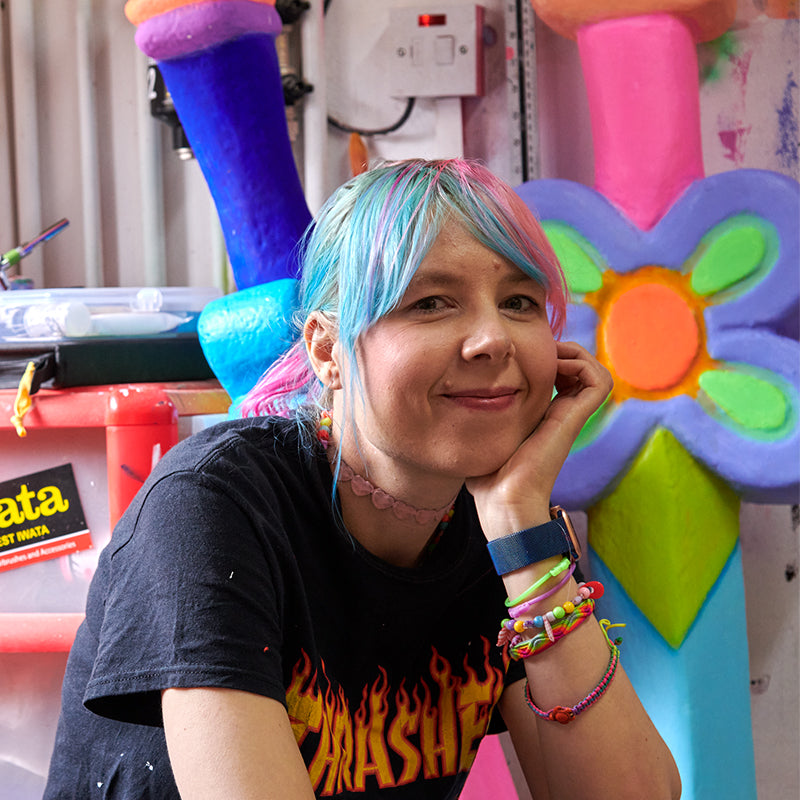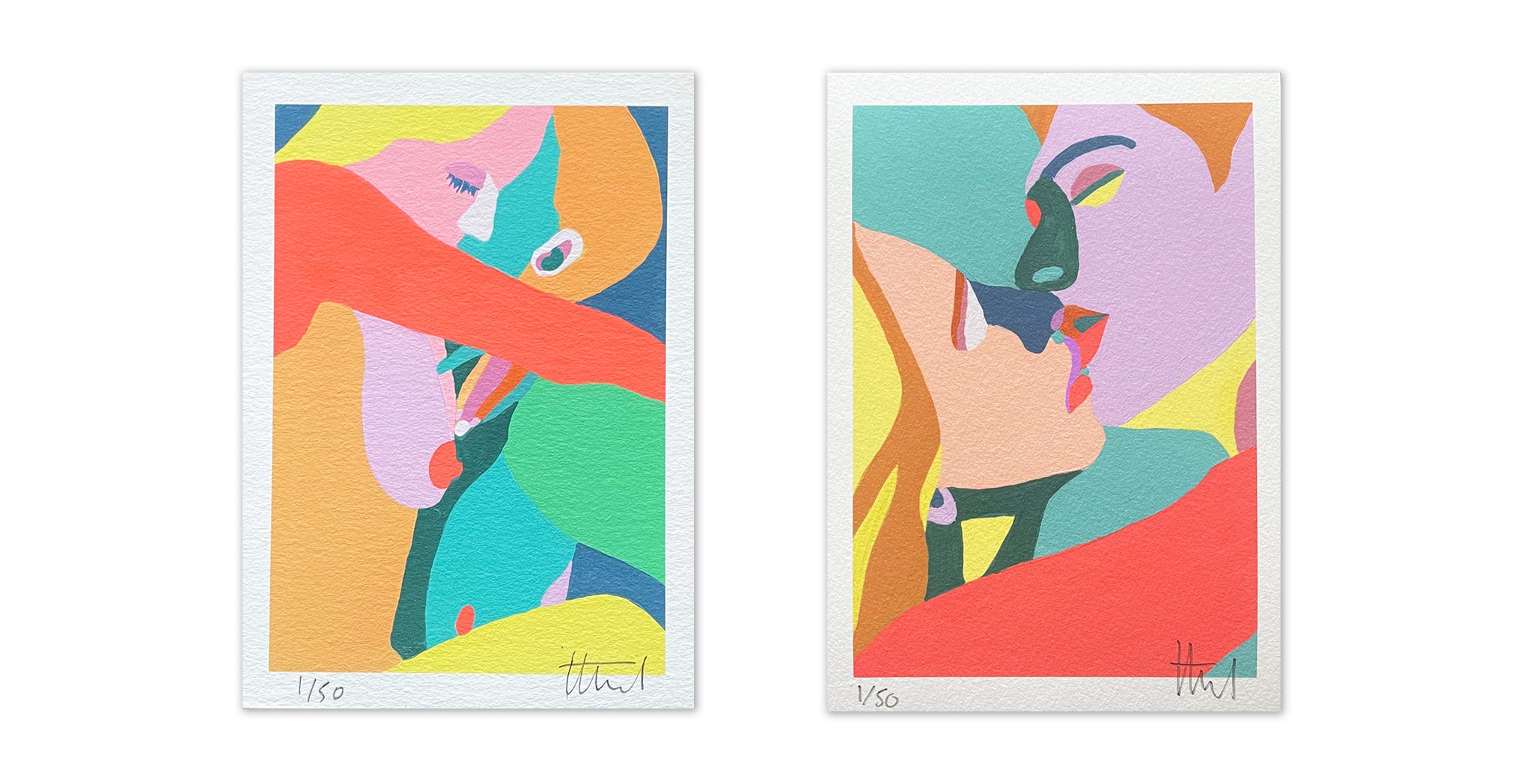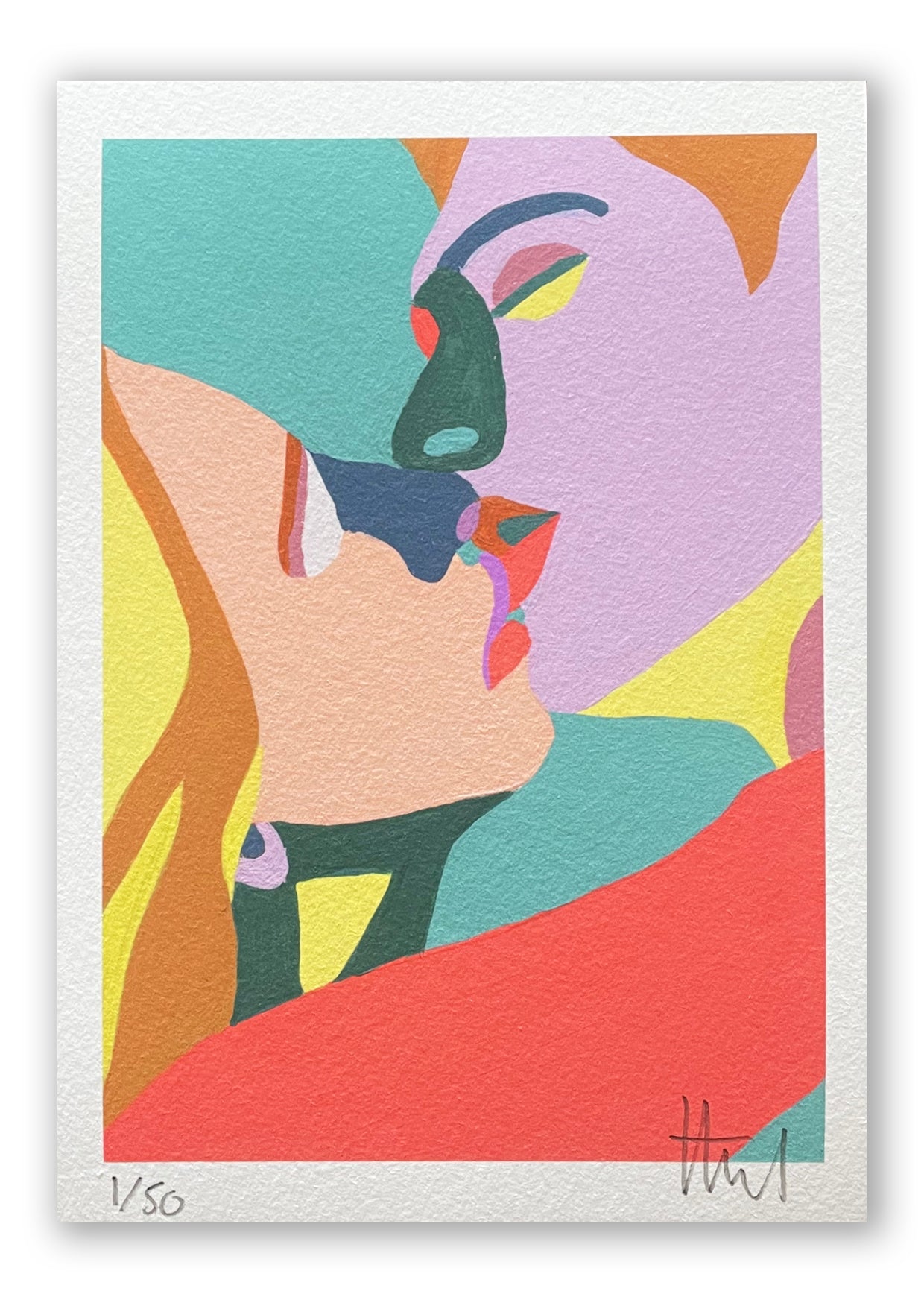So each had a private little sun for her soul to bask in; some dream, some affection, some hobby, or at least some remote and distant hope... – Thomas Hardy
We are extremely excited here at Art on a Postcard that David Inshaw is on board as one of our Artists for Art on a Ukulele. In 1975, Inshaw founded the Broadheath Brotherhood alongside Peter Blake, Jann Haworth and Co. whose work was recognised internationally and exhibited at the Royal Academy. Since his rise to success Inshaw’s paintings are exhibited at such museums as the Tate Britain and the Wiltshire Museum. Living in Devizes, Inshaw’s work is heavily influenced by the countryside around him, and many of his dreamlike and almost surreal landscapes and country scenes have become iconic, internationally acclaimed artworks.

The Badminton Game
davidinshaw.net
Inshaw has cited his biggest influences as people and places, and within his work we see where these influences intersect. Inshaw is inspired by the works of Thomas Hardy who used the countryside as a metaphor for the human psyche, and in his most famous work, The Badminton Game, we see heavy examples of this. In this dreamlike scene, trees loom over the girls as they play, their shuttlecock suspended in the air, the dominant trees are in opposition, one is curved and rounded, the other rigid and straight. This scene is brimming with sexual symbolism and exists within a landscape that is clean cut but mysterious as if darkness lurks behind the box bush to the right of the painting. For Inshaw this link between nature and the human condition is not only existent in paintings, it is how he sees landscapes in reality. When a friend asked him why he so often climbs a hill that the locals call ‘Adam’s Grave’, he replied ‘It looks so like a nipple or a breast. It’s so sensuous, this soft, undulating downland. It’s so wonderfully feminine’.

Oak Tree, Bonfire and Fireworks
davidinshaw.net
The heavy influence of poetry comes through to his contemporary work too. In Oak Tree, Bonfire and Fireworks(2004), the painting reads like a visual poem. The bonfire at the bottom right corner crackles, hisses and reaches toward the sky, while the firework bangs and bursts towards us, creating a vivacious balance and a sort of order, whilst also feeding energy into the narrative. The tree, the moon and the firework, all take similar circular form, drawing links between space, the earth and human existence. Given Inshaw’s afore mentioned artistic link between nature and femininity, one wonders whether the circles, the fire and the suspension of the bang also eludes to certain sexual symbols. These questions arise from all of Inshaw’s works; so familiar in scenery and yet so mysterious in style. He is one of those artists that knows where to place things. He knows how to manipulate the recognisable environment in order to create a scene that resembles the liminality of a pleasant dream in which you have an impeding feeling things could descend into a nightmare. If dreams are a demonstration of our inner most psychology, Inshaw’s paintings work like a mirror into the mind of the viewer.
We’re extremely excited to see in what innovative manner David Inshaw approaches our Art on a Ukulele project so please join us to find out more by signing up to our mailing list (at the bottom of the page) to receive updates about this project and to find out about our crowdfunding campaign, the rewards we are offering and be part of the process over the next few months.
About the writer
 |
Rosa Torr is a final year BA Politics and Philosophy student from London currently at University College Dublin. Her place of interest is political theory and in particular Gender Studies. Rosa has written for numerous online publications and the University Observer. She is also a theatre maker and is currently co-artistic director of BUMP&GRIND Theatre Company. The show she co-wrote BUMP will be on at the Edinburgh Fringe Festival this summer. |


















